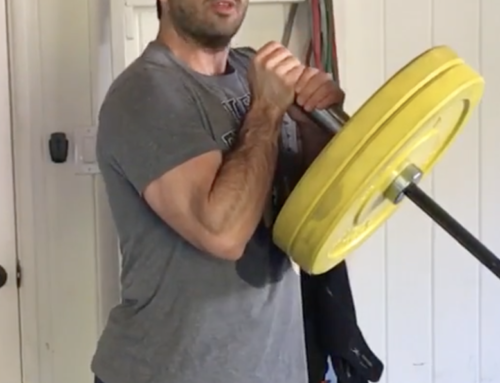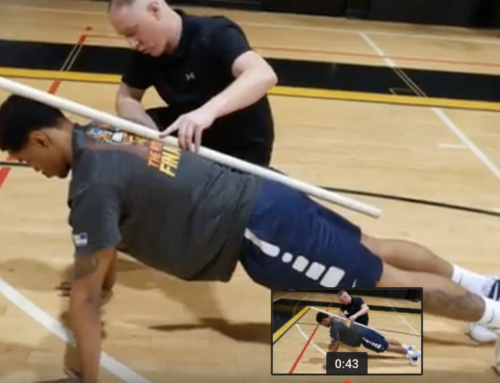4 Steps to Preventing Injuries with Band Training –
Part 1
“Okay. I want to start training my athletes in bands. What’s the first thing I do?”
The first thing you do is work straight ahead because that’s the strongest movement. They’ll know how to do that. They’ll have success with it.
If I’m going to start training an athlete, I’m going to start with teaching them how to be very quick. The first three steps going forward because the game of basketball is basically two to three to four steps and something’s going to change and they got to go with something else. They got to go pick a ball, they got to steal a ball, they got to shoot. Whatever. I don’t mess around with much more than three steps. Forward, straight ahead is my first progression.
Shuffling is my second progression because that would be the next movement that we learn most efficiently.
Then the last or third movement is going to be typically back pedaling because again running backwards isn’t something we do on a regular basis and there’s more balance and coordination to it.
And then finally, fourth, we’re going to teach them how to integrate and get their hips to rotate in conjunction with their upper body. Because when rotation comes in the lower body and the upper body, the lower extremities and upper extremities have to be coordinated because they’re literally going to go opposite directions in some ways, and so you have to go ahead and be able to teach that.
So first we teach them the movement patterns we want to work: straight, lateral, back pedal, and rotation.
Next we work into the speed. What’s easier to teach accelerating or slowing down? Accelerating. Everybody can accelerate and pretty much be injury free. I’ll make a special note here. Another thing I learned in physical therapy is 95% of all injuries that happen, happen because somebody couldn’t slow down.
Coaches need to keep that in mind: An athlete couldn’t slow down and they got injured. So, that tells you right there what we do better. We do much better accelerating. Well, under the accelerating umbrella is running straight ahead and not having to worry about stopping. That never happens in a basketball game. So, jumping, everybody does great with jumping. It’s the landing that gets them in trouble. The jumping is the acceleration, the landing’s the deceleration.
Now I hope you understand where I’m coming from. When I go back to developing first step speed, I’m going to teach the athlete how to accelerate real quickly for three to four steps. Then I’m going to tell them to stop and I’m going to have them walk back and we’re going to do it again. Once they show me they can integrate acceleration into forward, sideways, backwards, rotational then I pre load the band and I make the band force them to become better decelerators or better at slowing down against a resistance. So now we bring in deceleration but that’s a much slower progression and it takes a look at longer because athletes don’t notoriously stop very well. So, that’s how we progress.
Then once they learn acceleration, they learn deceleration of a particular movement pattern, then what I do is I say, “Okay, let’s put it all together. Let’s accelerate out, let’s accelerate back. Let’s accelerate out, let’s accelerate back.” All right? And get them flying as fast as they can in both directions against the band going out and against the band as it pulls them back into the starting position. That’s how I put together.
Deceleration is the key to it. Deceleration control is the same key to you becoming a better basketball player from a shooting standpoint. How do you do that? I practice, I work on my mechanics, the movement becomes a muscle memory and I don’t even really think about it. It’s just the ball hits my hands, it goes to my fingertips and I release it. That’s the same concept that we want coaches to understand if we’re going to get kids to not only be great decelerators and quick athletes, it’s got to become a reactive muscle memory response.
You can find out more about Dave at these places:
And you can download his basketball drills here: 50 Free Basketball Drills
Dave Schmitz, PT, CSCS, PES has been writing, teaching and training how to implement resistance band training for rehabilitation, general conditioning, and performance since 1996. He is the founder & co-owner of Resistance Band Training— the leading band provider worldwide.







Leave A Comment